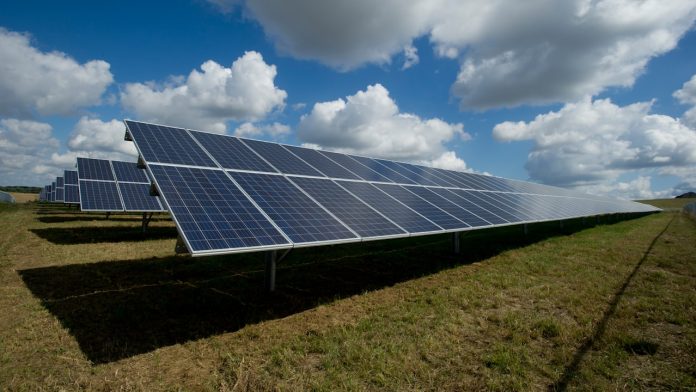A solar panel with outlet is not a typical or usual layout. Solar panels are primarily designed to produce electricity using direct current (DC) from sunlight. To use this DC power, attach it to a battery backup or a converter, which will turn it into alternating current, or AC, which is used by most domestic appliances.
Yet, when you’re searching for a sunlight-powered choice that’s capable of immediately powering little electronics or charging Internet-compatible equipment, transportable solar cells with included USB interactions are accessible. Devices typically have included storage that stores the power created for future use.
Design and Elements of Solar Panels with Outlets:
Solar panels with included outlets are designed for offering an easy and readily available source of sun-generated energy. A brief description of the structure and necessary elements of solar panels with outlets are given below:
Solar Cells
Photovoltaic (PV) cells change sunlight into energy in solar panels. Typically, these cells are made of silica or other semiconducting substances. The amount and installation of solar cells influence the energy generated and the efficacy of the panel solar panels with outlet resembling the norm panels including solar cells.
Converters and Power Management
Solar panels supply direct current (DC) electricity, however, a large number of electronics and appliances require alternating current (AC). Solar panels with outlets incorporate transformers and purifying devices that convert DC energy into practical AC power. These appliances adjust the strength, number, and pattern of the current to conform to the demands of typical power outlets.
Batteries
Solar panels with outlets sometimes have integrated battery banks to store additional power created during times of direct sunlight. These batteries achieve several purposes:
Storage of Energy:
Batteries save extra electricity for future use, providing an uninterrupted source of energy even when there is not much sunlight.
Power Management:
Batteries serve in ensuring the stability of both current and voltage results, flattening out differences while providing reliable power for connected appliances.
Power Reserve:
In the instance of an electrical failure or a catastrophe, the batteries can provide energy to the connected appliances.
Outlets and Connectors
The incorporation of one or more traditional electrical connections incorporated into the layout of solar panels with outlets is an important identifying characteristic. These plugs enable clients to link appliances and charge electronics requiring the need for extra inverters or converters. The total amount of outlets may vary depending on the dimension of the panel and its planned utilization.
Safety Features Include
Solar panels with outlets respect security regulations for protecting customers. Storm protectors, ground-faulty circuit interrupters (GFCIs), and overcurrent safeguards are all common security features. These properties defend against growth, shorts in electronics, and other potential dangers.
Design Modifications and Installation Options
Solar panels with outlets can be purchased in a wide range of diameters and arrangements to suit a variety of placement needs. Common solar panel installation solutions are available to set up on roofs, structures, or ground-based buildings. For more flexibility, some panels may have extra features such as flexible angles or transportable designs.
Control and Monitoring Systems
Professional solar panels with outlets can have control and monitoring devices that enable customers to track and manage generation and utilization. These devices offer current information on energy production, fuel situation, and system performance in general. Remote monitoring and control can be made available via smartphone applications or websites.
Dimensions and Form Factor
The design of solar panels with outlets has to incorporate safety parts. Overload security, excessive current security, earthquake avoidance, and other approaches that guarantee secure operation while avoiding injury to connected machinery may be incorporated.
Conclusion
Solar power plants with outlets enable a productive and sustainable method of producing power. They represent a green replacement to existing fossil fuels, decreasing the release of greenhouse gases while contributing to an environmentally conscious future.
Finally, solar panels with outlets offer a novel chance that increases the accessibility and efficiency of energy from the sun. These innovative solar panels combine the benefits of solar energy generation with the convenience of built-in outlets.








